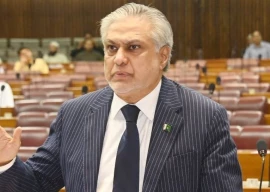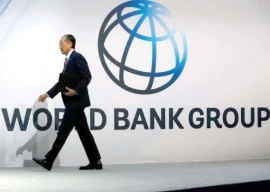
Even when it was officially confirmed that Pakistan was not on the itinerary, a local news agency reported that the president would make a quick stop at Chaklala air base to meet high-ups of the Pakistani government. But let’s face it. He was never going to come and despite all the promises of a visit next year, the prospects seem quite dim.
No matter what we refer to the 10-day tour of Asia as, it is evident that in actuality it is an attempt by the already shaken president to revive the economy back home. After all, he must show the American citizens who voted for him that he is still capable of holding office – despite the fact that his party took a beating in the recent mid-term elections.
No matter what the world would like to believe, the fact is that the primary influence on voters in the US is a candidate’s stance on the economy (read: creation of jobs), not wars being fought in distant lands and most definitely not how much aid the government has given to a third-world country submerged in the worst-ever floods to hit in its history.
Why then should we assume that Obama would make time for Pakistan? After all, all we want from the US is more aid, duty-free access to their markets in the form of reconstruction opportunity zones and so on – mostly things that would have a negative impact on taxpayers there.
As far as the fight on terror is concerned: it is highly unlikely that after so much warring, the Pakistani government will decide to go the other way – especially when the military and other bureaucratic organisations are weighed in so much in favour of the Americans.
It is naive of us to think that Obama must visit Pakistan if he is visiting India, otherwise ‘it won’t go down well with the people’ just because we are an ally in the war on terror. Perhaps the Americans are right when they say relations with Pakistan and India are based on very different premises and hence should not be equated.
Meanwhile, it should have been evident beyond doubt to anyone listening to Obama’s address to Indian entrepreneurs on Saturday that things are not the same as they were a decade back when Bill Clinton became the first US President to visit the country in almost two decades. The Indian economy is one of the select few that are growing at this point. Instead of offering cheap options to companies in the US to outsource their labour-intensive activities, India is now a potential market for American goods.
Reportedly, the president is travelling with more than 200 executives from American companies, including Boeing and Lockheed Martin, to urge India to open up its market to US goods. On the first day alone he announced deals worth $10 billion that would result in the creation of an estimated 54,000 jobs at home.
From what Obama said himself, at present trade between India and the US is less than trade between the US and Netherlands – a country with only a fraction of India’s population. With the announcement that controls over the export of what Reuters refers to as ‘sensitive technology’ will be relaxed, he seemed eager to boost trade exponentially – while ensuring jobs neither in the US nor India are affected.
“The United States sees Asia, especially India, as the market of the future,” Obama told a meeting of US and Indian business leaders. “There still exists a caricature of India as a land of call centres and back-offices that cost American jobs. But these old stereotypes, these old concerns, ignore today’s realities.”
Of course, countering China’s stronghold on Indian trade adds a whole new dimension to the story. That being said, we should understand that it makes perfect economic sense for Obama to avoid coming here and instead focus on the more ‘important’ players in the region – important in terms of economics at least.
Published in The Express Tribune, November 7th, 2010.

1731914690-0/trump-(26)1731914690-0-165x106.webp)















COMMENTS (19)
Comments are moderated and generally will be posted if they are on-topic and not abusive.
For more information, please see our Comments FAQ